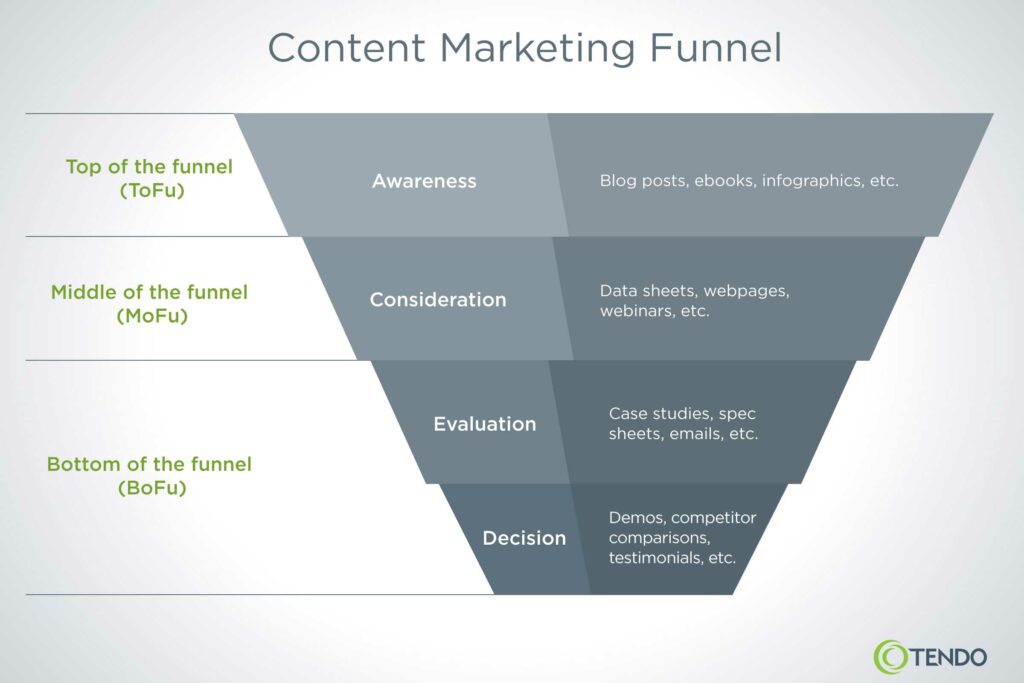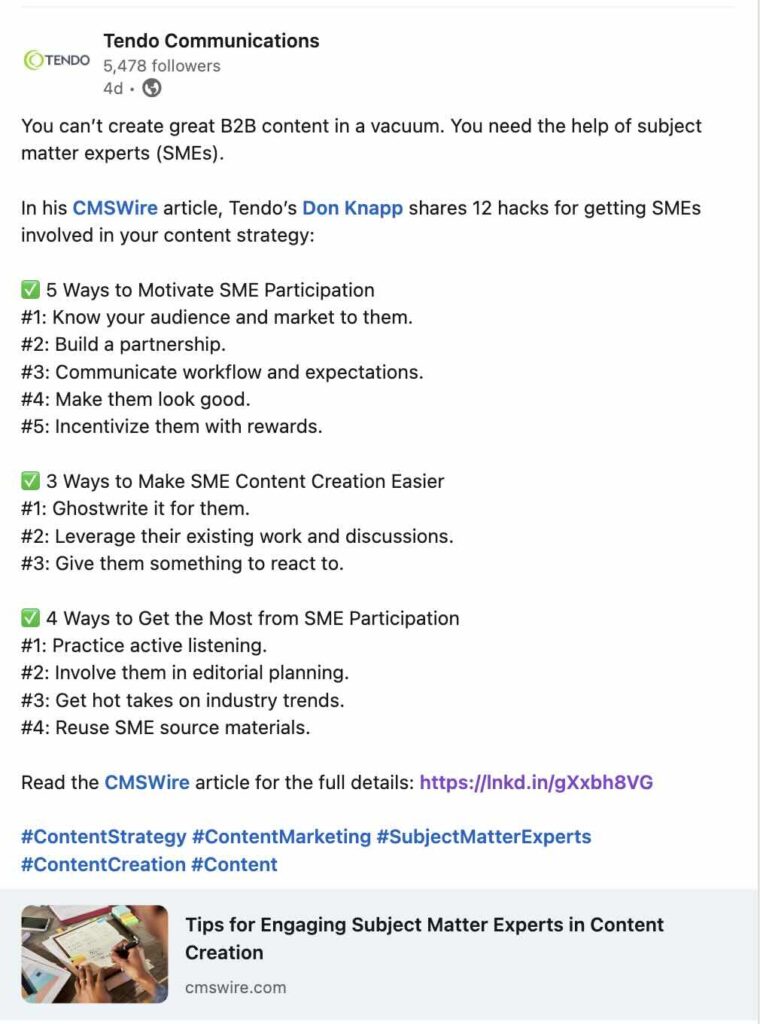So, you are about to compose your first content brief for a writer who has accepted an assignment from you. Or maybe you just want to improve your current content brief process. Either way, you’ve come to the right place. If you’re a content editor or content strategist responsible for assigning and producing content, creating an effective content brief is a marketing toolkit essential.
While these guidelines focus primarily on B2B content creation, you can follow these recommendations for B2C content development as well.
What Is a Content Brief?
A content brief is an instructional document that outlines all of the information required to produce a piece of content, whether it’s a blog post, e-book, white paper, or video script. Editors or content strategists craft briefs for freelance or in-house content writers at the outset of every project.
Why Start with a Content Brief?
A well-executed content brief not only aids your writer, but it also ensures that you know:
- What you want
- What the goals of the piece are
- What you’re actually assigning
If you’re unsure of certain specifics, no doubt your writer will be confused. Don’t let that happen. Writing a content brief will help you address all the key ingredients needed to create content that hits the mark.
The benefits of starting with a content brief include the following:
- You’ll bring the most important aspects of the content to your writer’s attention. This will put them at ease, encouraging them to work with you again.
- You’ll make the content development process more transparent and easier for a writer to engage with.
- You’ll speed up the editorial process. A solid brief will elicit fewer questions from your writer and result in a more complete, accurate first draft that meets all of your requirements.
Conversely, if your writer isn’t working off a content brief, you’re more likely to engage in a frustrating barrage of questions and answers, resulting in a subpar first draft.
“A carefully crafted thesis, sample interview questions, and source suggestions—they’re the trifecta of any concept brief,” says Cindy Waxer, a freelance writer who has worked with Tendo. “With these three elements, I typically know exactly what the editor hopes to see in the piece, what will make the client happy, and what will most interest readers.”
How Do You Write a Brief? 10 Elements You Should Always Include
Some assigning editors provide a lot of detail and directives in their content briefs, while others keep it short and sweet. Whatever your approach, your goal is to create a helpful reference document that enables your writer to immediately begin a draft. To achieve a comprehensive brief, be sure to include these key elements:
1. Target Audience
B2B content needs can target different audiences for different products or services. And the audience is everything. Once your writer understands the audience, they can focus on the goals of the piece. Help your writer home in on the specifics of your ideal audience by providing background on:
- Who the content is for—what’s your target audience’s job title or persona, what do they do, and what are their careabouts
- What stage of the buyer’s journey they are in
- How much they already know about the topic at hand to help determine whether the piece is high level or more technical?
2. Content Goals
Include the assignment’s short-term and long-term goals. Cover any specific KPIs by which you’ll measure this content. Include details that answer questions such as:
- What is this asset going to be used for? Is it for the company blog, for external publication, or part of a larger campaign?
- Where does this piece fit in the funnel? Is the asset intended to build brand awareness or increase reach? Will your company use it to create new leads?
- What do you want this piece to convey, and what do you want your audience to do or know after reading it? What questions should this piece answer? If you know them, include the specific pain points your writer should focus on.
Providing a summary statement with a working or placeholder title also goes a long way to narrowing the focus of the piece.

3. Type of Content
Even if it’s already mentioned in a statement of work (SOW), include the type of content you need in your brief. Is it an article, blog post, e-book, or white paper? Is it a thought leadership, trend, or opinion piece?
4. Editorial Guidance
Make sure to give your writer guardrails and include:
- Brand voice and tone: Share your brand attributes with the writer. Indicate whether the piece should be in first or third person. And specify if it should lean toward promotional, professional, funny, or technical.
- Messaging: Provide the writer with any specific messaging they should follow about the product, service, or situation they are writing about.
- Word count: Specify how long the piece should be.
5. Background Materials
Provide your writer with additional resources as part of the briefing process. This means going beyond “take a look at our website” for more information. Be sure to include as many of the following support resources as possible:
- Include basic information about your company and products, along with competitive differentiators. If you have them, provide your company’s editorial style guide and a branding document.
- Attach or link to similar articles, in-house materials like product marketing materials, PowerPoint decks, webinars, persona tools, and videos to help your writer get a clearer picture of how to represent your company.
- Provide additional articles or assets from competitive or other websites if third-party views will help with research.
6. Subject Matter Experts
Even if you have a bunch of background materials, sometimes more information is needed. This is where a subject matter expert (SME) comes in. Your SME should be an authority on the topic, product, or service the asset will cover. If the assignment requires an SME, include a bio or LinkedIn profile along with additional context as needed. Make it clear whether the SME is available to answer questions over email or in an interview.
7. CTA and Additional Links
Is there a main call to action (CTA) the piece should include?
- Should the asset link to a supporting blog post or webpage, a contact us form, or a demo?
- Should it link to third-party research or other external sites?
8. SEO Requirements
Your writer should always write with SEO in mind. To optimize content for search, be sure to provide:
- Focus keywords (primary and secondary) or a keyphrase
- Link requirements (how many and what types of internal and external links to include)
- The preferred format for meta title and description (include character count information)
9. Social Media Requirements
In addition to the asset itself, should your writer provide social media copy? You can make this section optional. But be sure to provide as much information as you can if social copy is required:
- Links to the social channels they are writing for and specific instructions, including voice differences for different social platforms
- Character counts
- Social media template: If a lot of your writing assignments request social copy, you might consider creating a template that includes all of this information for the writer to fill out, usually once the first draft is approved.
- Examples of successful social posts

10. Deadlines and Timing
Assign your content as soon as you know you have the need, so you can give your writer enough advance notice and time to research and write the piece. Make sure you set a very clear deadline. If you’re ambiguous, your writer might deprioritize your assignment.
Finally, don’t forget that you’re a resource, too. Let the writer know how best to contact you. And most importantly, make time for them.
Content Brief Formats and Templates
Now that you have a handle on all of the information that your writer needs to know, it’s up to you how to share it. Whether you have a kick-off call with the writer and other stakeholders or add the necessary information to an assignment letter instead, what’s important is that your writer has everything they need to start their project.
What’s the best way to convey all of this information? You can embed your specifications within your email or prepare a separate Word or Google doc with the information—as long as you make it a consistent, repeatable process. Creating a content brief template or format that you can reuse will save you time in the long run and ensure consistency from assignment to assignment.
Your content brief template may evolve over time, and that’s OK. While it should be a fluid document you can easily customize to your impending content need, working from a structured format will:
- Help you set the right goals.
- Include the most helpful information.
- Ensure a smoother content production process.
- Increase the chances for a successful project.
Plus, you’ll have a writer who will want to work with you again. Now, go write that brief!
Hit a Home Run with Your Content Marketing Assets
Enhance your content with Tendo’s expert editorial services. Our dedicated team of B2B content creators have helped some of the best-known B2B brands engage and delight their target audiences. Contact us today.
First published January 5, 2021








